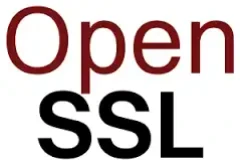OpenSSL's New Governance Structure: A Beacon of Progress for Open-Source Security

On July 24, 2024, OpenSSL took an extraordinary step toward improving community engagement and realigning with its core values when it announced the implementation of a new governance framework and the launch of several projects under its mission statement. This event marks a historic moment for OpenSSL and Linux administrators worldwide who depend on this foundational technology for secure applications.
OpenSSL, the open-source cryptographic library providing secure communications for websites and applications, plays an essential role in the digital security ecosystem. Linux systems rely on it heavily to ensure data integrity, confidentiality, and authentication across many applications. OpenSSL's newly unveiled governance structure seeks to better reflect the project's longstanding mission by engaging community participation more actively while leading decision-making processes more inclusively. To help you better understand this initiative, I'll explain what has changed in OpenSSL's new governance model, the security implications for admins like you and me, and the project's plans for the future.
What Is OpenSSL's New Governance Model?
 OpenSSL's revised governance framework introduces two independent, co-equal entities: OpenSSL Foundation and Corporation. They specialize in non-commercial and commercial communities and operate autonomously to meet community needs. With this arrangement, decisions align more effectively with community requirements than before.
OpenSSL's revised governance framework introduces two independent, co-equal entities: OpenSSL Foundation and Corporation. They specialize in non-commercial and commercial communities and operate autonomously to meet community needs. With this arrangement, decisions align more effectively with community requirements than before.
As part of the move to disband the OpenSSL Management Committee (OMC), governance now rests in the hands of two elected boards of directors who share responsibility, similar to what previously was held by OMC. Furthermore, Community Advisory Committees consisting of the Business Advisory Committee (BAC) and Technical Advisory Committee (TAC) will act as conduits for community input, signaling a shift toward more democratic governance practices.
This structural reform brings significant advances in security and reliability for OpenSSL-powered systems. Two focused entities provide enhanced tailored support and developments in security protocols to create more secure Linux environments. Community Advisory Committees will ensure that Linux administrators' security needs and challenges find an efficient means of expression and resolution, keeping OpenSSL's roadmap aligned closely with today's ever-evolving security landscape.
OpenSSL Expands its Mission to Encompass New Projects & Advance Linux Security
At this juncture of its development, OpenSSL has also welcomed Bouncy Castle and cryptlib under its mission, adhering to their respective missions and values. Both projects are longstanding players in cryptography: Bouncy Castle provides open-source cryptographic APIs for Java and C# apps, while cryptlib offers a toolkit for embedding encryption services into applications.
 Bouncy Castle has proven invaluable for developers and Linux administrators. Thanks to its FIPS-certified solutions, long-term support releases, and quantum-ready cryptographic support, it bolsters the security posture of Linux systems that use Java or C# programming languages, giving administrators peace of mind knowing their systems contain state-of-the-art cryptography features.
Bouncy Castle has proven invaluable for developers and Linux administrators. Thanks to its FIPS-certified solutions, long-term support releases, and quantum-ready cryptographic support, it bolsters the security posture of Linux systems that use Java or C# programming languages, giving administrators peace of mind knowing their systems contain state-of-the-art cryptography features.
Similarly, the portability and support for multiple security protocols, including SSL/TLS, make cryptlib an indispensable asset in Linux security. It streamlines implementing world-class encryption services while improving application efficiency and reliability on Linux-based devices.
Integrating Bouncy Castle and cryptlib into OpenSSL's mission and transitioning to its new governance model will herald a new era of innovation and security for Linux administrators. Access to diverse cryptographic tools and solutions helps enhance security standards while meeting common challenges more efficiently.
Linux administrators can look forward to more secure, robust cryptographic implementations backed by community insights and innovations facilitated by the new governance model. These developments will increase security on Linux-based systems and foster an environment conducive to continued collaboration in the open-source security space.
Final Thoughts: What's Next for OpenSSL?
As OpenSSL embarks on its transformative journey, Linux administrators stand to reap significant benefits in terms of enhanced security, innovation, and community engagement. With advisory committees slated to be created and an OpenSSL user conference planned soon after this transition period commences, its future and effect on Linux security look bright. OpenSSL has welcomed these modifications, reinforcing its dedication to digital security in an increasingly connected world. For Linux administrators, staying abreast of these developments is crucial to keeping pace with cybersecurity's ever-evolving landscape. At LinuxSecurity, we commend OpenSSL's newly announced governance structure and projects, representing a transformative leap forward for cryptographic security and community engagement.













